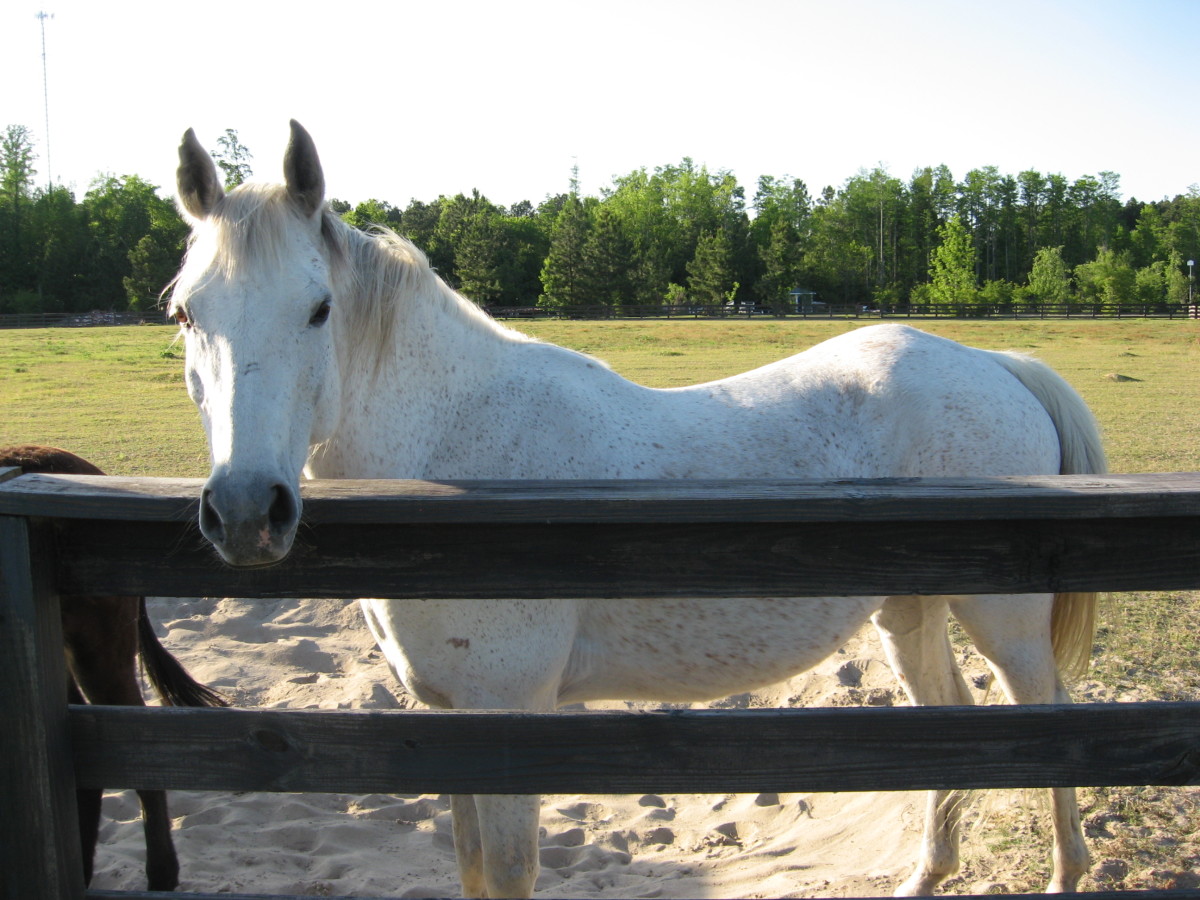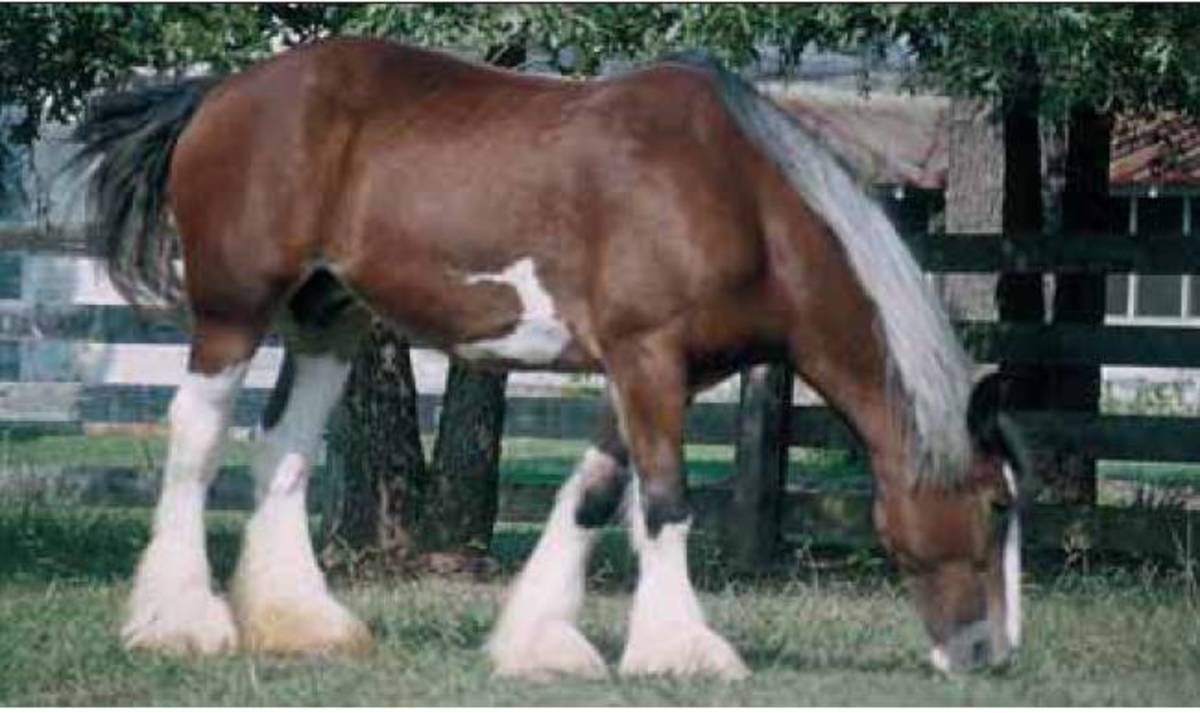Evolution of Horses
Prehistoric Man and Horses
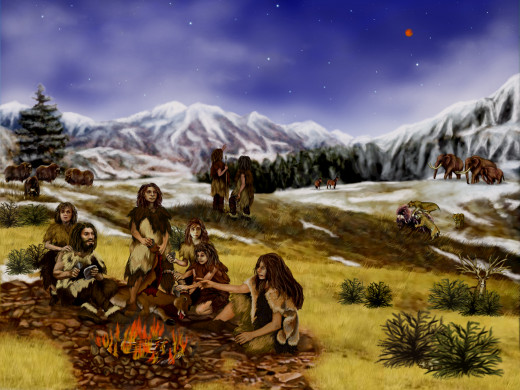
What Did the First Horses Look Like?
The horse of today is a much different animal than its ancestor of long ago. A look back at 50 million years ago, fossils tell us that a small animal about the size of a fox is the ancestral remains of the first horse.
Archaeologists called it Eohippus, which means the dawn horse. The earliest horse existed about 60 million years ago and was called eohippus or hyracotherium, also known as the dawn horse. The North American species were originally given the name eohippus by O. Marsch in 1876. Paleontologists had named other fossils found in 1840, Hyracotherium and discovered eohippus was the same genus. Hyracotherium was a small animal that had 4 toes on the front foot, and 3 toes on the hind foot. It was a small dog like animal that stood about 18 inches tall.
The evolution from this dog like creature to the horse is not as direct as other animals. Paleontologists have discovered fossils that show the ancestors of the horse varied in size. They found fossils that show some early horses were large, and some later horses were smaller. Some horses had a many toes, some horses later had fewer toes.
Horses Have Always Grazed
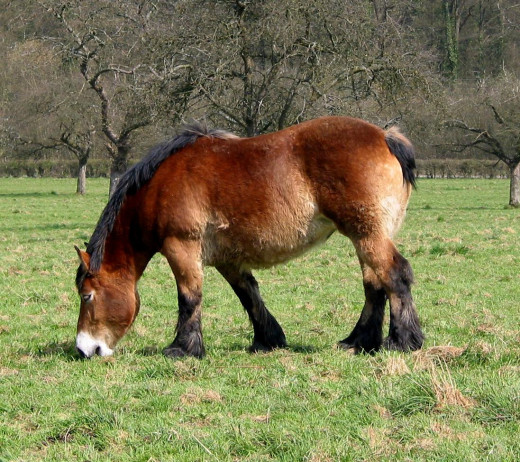
The Evolution of Horses and The Evolution of Grass
Today’s horse is probably closer to the remains of a small dog or perhaps pony sized animal that lived about a million years ago. Scientists believe these animals traveled in large herds that galloped across the land. It is believed these horses became extinct across the continents, including North America, and only horses and zebras in Central Asia survived.
The evolution of horses, is connected to the evolution of grass. Grass appeared about 55 million to 65 million years ago, just before the extinction of the dinosaur, and the appearance of the first horse, the
Over time, the climate and vegetation changed from soft to tougher foliage and the plants began to grow taller. The early horses molar teeth changed to chew the tougher plants. The Mesohippus emerged, as a taller early horse with a longer neck. The number of toes on each foot decreased to three per foot. About 23 million years ago, the Mesohippus evolved into the Parahippus, who had much longer legs, and teeth that adapted to grinding and chewing grass. 17 million years ago, Merychippus became the first recognizable prehistoric horse, with more. These horses adapted to running and carried their weight in their middle toes. The two other toes receded and the hoof was formed. the horse continued to evolve by elongating its legs, changes in their teet and developing hooves. About 4 million years ago, Equus evolved. Today there are hundreds of different breeds of horses around the world. Many of these breeds came about through selective breeding by humans. This was done so horses could perform specific tasks.
Human evolution is also connected to the evolution of grass. About 10,000 years ago, man domesticated grass such as wheat, rice, and corn, which demarcates the start of civilization. The horse contributed greatly to the progress of agriculture.
When Did Horses Come Into Existence
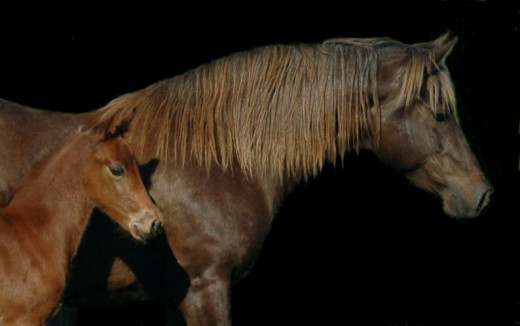
Horses Became Extinct
The distant ancestor of the horse lived in the tropical rain forests in North America, which later dried up over millions of years where the Rocky Mountains are. Evidence has also been found from about a million years ago of an ancient horse the size of a small pony that traveled in herds around the world. It is believed their behavior was very similar to today’s horses.
All horses in North America became extinct about 10,000 years ago. Scientists believe changing climate during the last ice age may have played a part. It is also theorized that human hunters may have played a part. The only horse ancestors that survived were in Central Asia. As the horse population grew, they walked to Europe.
Early humans, Neanderthals and Cro Magnon man hunted wild sources as food. Amazing artistic cave paintings of horses were found in 350 sites across Europe, documenting the importance of horses in the activities of prehistoric man. The most After the Ice Age, horses survived in great numbers.
People have long had a fascination with horses, going back to the days of cavemen. These stone age drawings of horses are depicted on cave wall drawings. Well known of these cave drawings are in Lascaux, France from about 17,000 years ago which show horses in herds. These drawings may indicate the spiritual connection early man felt towards horses.
When archeologists have uncovered the remains of ancient civilizations, there is usually evidence of horses as part of their social and economic structure. The horse has always been an important part of our social fabric. Horses were also used in sporting events and races and games that people participated in with the horses. No horse fossils have ever been found in Australia. Horses first arrived in Australia in the 18th century, when settlers brought them there.
Horses were not domesticated at the time, but humans could attract the horse with food. The first evidence of domesticated horses was found in Kazakhstan around 5000 BCE.
Cave Drawings and Horses
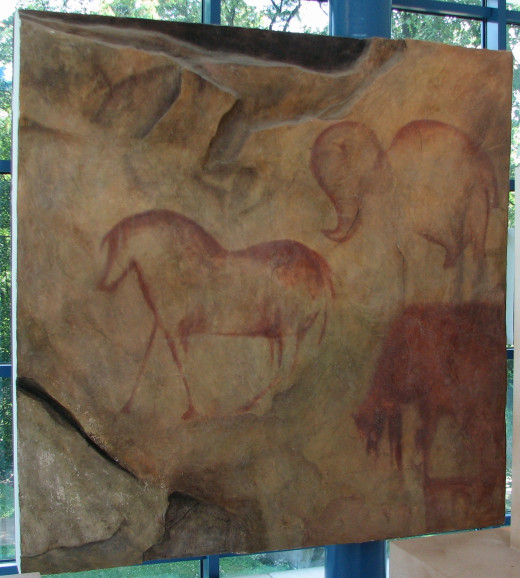
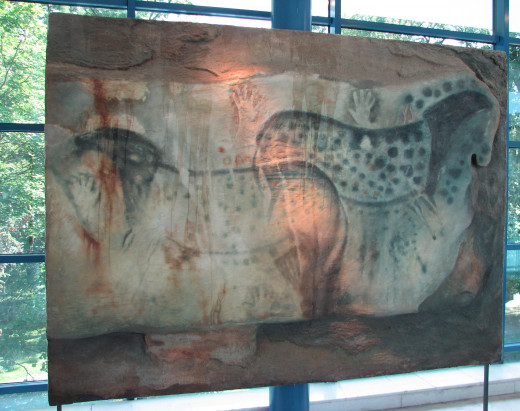
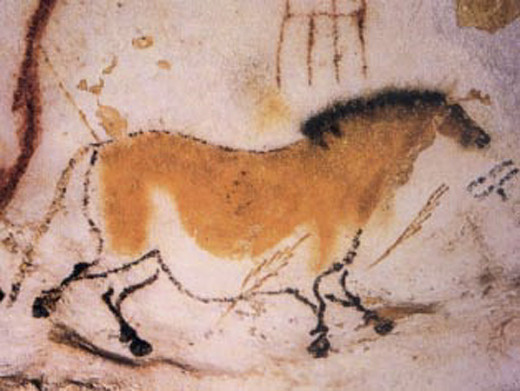
The Domestication of the Horse
The horse was first domesticated about 3000 BC. Going back to early man, horses appear in cave drawings. Horses were roaming wild in Asia over 5000 years ago. The original purpose human beings used horses for was with cattle, but man soon learned horses were a useful form of transportation. People were able to travel further and faster when they rode a horse.
As we look at the history of man, horses have always played an important role. Horses brought prosperity to those who domesticated them.
The domestication of horses became a turning point in man’s progress. Horses allowed cultures to grow from obscure areas of the globe that then brought trade and goods to trading areas in other parts of the world. Taming horses changed everything from trading to agriculture to warfare.
In the Ural mountains, remains of horse bones, teeth, and pottery pieces that were used to store mare’s milk show horses were domesticated about 2,000 years prior to the known use of domestic horses in Europe.
Archaeologists in Eastern Europe and North of the Black Sea, found bridles, cheek pieces, mouth toggle pieces that could be dated to about 4000 B.C.
The hunters of this time period, 3500 – 2300 BC, would not have transported skulls and backbones from their hunts in the wild.
Researchers also discovered on premolars of horses that there was microscopic wear on their teeth, probably caused by a bit. Soil studies show that the horses were corralled by the homes of Botai people. In 2009, pottery containing mares milk was found, indicating this society domesticated horses because they would not be able to milk wild horses. The evidence that has been found to date suggests the Botai probably rode horses, hunted on horseback, and used their strength to transport their possessions.
Approximately 5,000 years ago, farmers kept horses for meat and milk and started domesticating horses for riding. Horse teeth fossils from this time period showed distinct signs of wear from mouthpieces on a bridle, indicating horses were controlled and probably being ridden by man.
Horsebacking riding and the domestication of horses changed societies and the history of man changed from that time on. Horses allowed man to travel faster, further, and pursue bigger ambitions. Once horses were domesticated, mankind and horses developed together.
Man and Horses
Horses have adapted to many different environments and climates. Horses have evolved with special traits based on their environment. Horses are prey animals and their survival mechanism is to perceive danger and run from it. They rarely fight,but will if they are cornered and have to defend themselves. Their long neck allows them to reach grasses without having to lay down and also to be able to raise their head high enough to see a long range of vision to identify danger. They can see all around them with eyes set on the side of their head. They have large nostrils which enable them to smell danger, large ears to hear danger, and large eyes to detect the slightest movement.
As man developed more machines, there became less work for horses. Horses are still used worldwide for sports, for recreation, for entertainment, and as pets.
Once people rode horses, they were able to travel faster and further than ever before. The Sumerian people in West Asia started using horses tied to wagon to carry more of their possessions.
What has been found among the Botai people has led scientists to believe that these were the first people to domesticate and ride horses. Of the approximately 300,000 animal bone fragments, that were found, 99% of the bones are from horses.
The first horses were smaller than they are now. Through time and evolution, they became the magnificent animals we see today. Much of the changes in recent times was due to intentional and specific genetic breeding. When we look at the close relationship that has existed between man and horses, we can see how we changed horses, and horses changed us.


